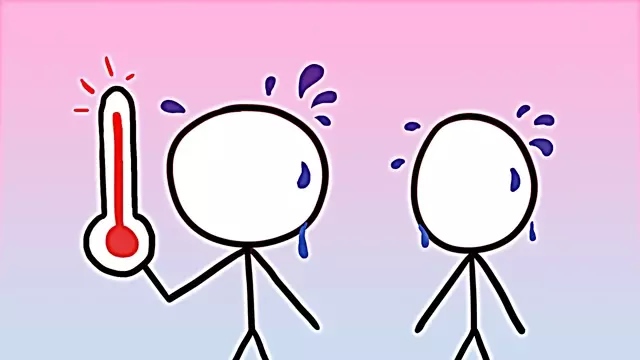2015-06-18
[public] 540K views, 15.4K likes, dislikes audio only
How can global warming of less than 1 degree Celsius drive extreme weather? You might need to look beneath the surface (of the ocean) for the answer.
This video was illustrated and animated by Jesse Agar. Check out his channel @ThisPlaceChannel
LEARN MORE
**************
To learn more about this topic, start your googling with these keywords:
- Extreme weather: Conditions and events that occur with low frequency, but which often have significant impact on people and nature; e.g., heat waves, droughts, heavy downpours, floods, blizzards, windstorms, hurricanes
- Ocean heat content: the energy stored as heat in the ocean
- Evapotranspiration: the movement of water vapor from land, water, plant, or animal surface into the atmosphere, driven by the drying power of the air
SUPPORT MINUTEEARTH
**************************
If you like what we do, you can help us!:
- Become our patron: https://patreon.com/MinuteEarth
- Our merch: http://dftba.com/minuteearth
- Our book: https://minuteearth.com/books
- Share this video with your friends and family
- Leave us a comment (we read them!)
CREDITS
*********
Peter Reich | Script Writer
Emily Elert | Script Editor
Henry Reich | Narrator
Jesse Agar | Illustration, Video Editing and Animation
Nathaniel Schroeder | Music
MinuteEarth is produced by Neptune Studios LLC
OUR STAFF
************
Emily Elert • Alex Reich • Henry Reich
Peter Reich • Ever Salazar • Kate Yoshida
OUR LINKS
************
Youtube | https://youtube.com/MinuteEarth
TikTok | https://tiktok.com/@minuteearth
Twitter | https://twitter.com/MinuteEarth
Instagram | https://instagram.com/minute_earth
Facebook | https://facebook.com/Minuteearth
Website | https://minuteearth.com
Apple Podcasts| https://podcasts.apple.com/us/podcast/minuteearth/id649211176
REFERENCES
**************
Church, J. A., N. J. White, L. F. Konikow, C. M. Domingues, J. G. Cogley, E. Rignot, J. M. Gregory, M. R. van den Broeke, A. J. Monaghan, and I. Velicogna (2011), Revisiting the Earth's sea-level and energy budgets from 1961 to 2008, Geophys. Res. Lett., 38, L18601, doi:10.1029/2011GL048794.
Diffenbaugh, N. S., Swain D. L. & Touma, D. Anthropogenic warming has increased drought risk in California. PNAS, doi 10.1073/pnas.1422385112 (2015). Published online.
EPA. Climate Change Indicators in the United States: Sea Surface Temperature www.epa.gov/climatechange/indicators - Updated May 2014
Gouretski, V., J. Kennedy, T. Boyer, and A. Köhl (2012), Consistent near-surface ocean warming since 1900 in two largely independent observing networks, Geophys. Res. Lett., 39, L19606, doi:10.1029/2012GL052975.
IPCC (Intergovernmental Panel on Climate Change): Climate change 2013: The Physical science basis. Fifth Assessment report of the IPCC [Stocker, T. F. et al. eds)]. Cambridge Univ. Press. 1535 pp. (2013).
NOAA (NCEI). Global Ocean Heat and Salt Content. https://www.nodc.noaa.gov/OC5/3M_HEAT_CONTENT/
Trenberth, K. E. Framing the way to relate climate extremes to climate change. Climatic Change, 115, 283-290, doi: 10.1007/s10584-012-0441-5 (2012).
Trenberth, K. E., Dai, A., van der Schrier, G., Jones, P. D., Barichivich, J., Briffa, K. R. & Sheffield, J. Global warming and changes in drought. Nature Climate Change, 4, 17-22, doi:10.1038/NCLIMATE2067 (2014).
Trenberth, K. E., JTFasullo, TG Shepherd. Attribution of climate extreme events. Nature Climate Change (in review).
Trenberth, K.E. (personal communication).
U.S. Global Change Research Program. 2014 National Climate Assessment. http://nca2014.globalchange.gov/highlights/report-findings/extreme-weather
/youtube/channel/UCeiYXex_fwgYDonaTcSIk6w
https://www.patreon.com/minuteearth
/youtube/video/4DF94Wvtekk

